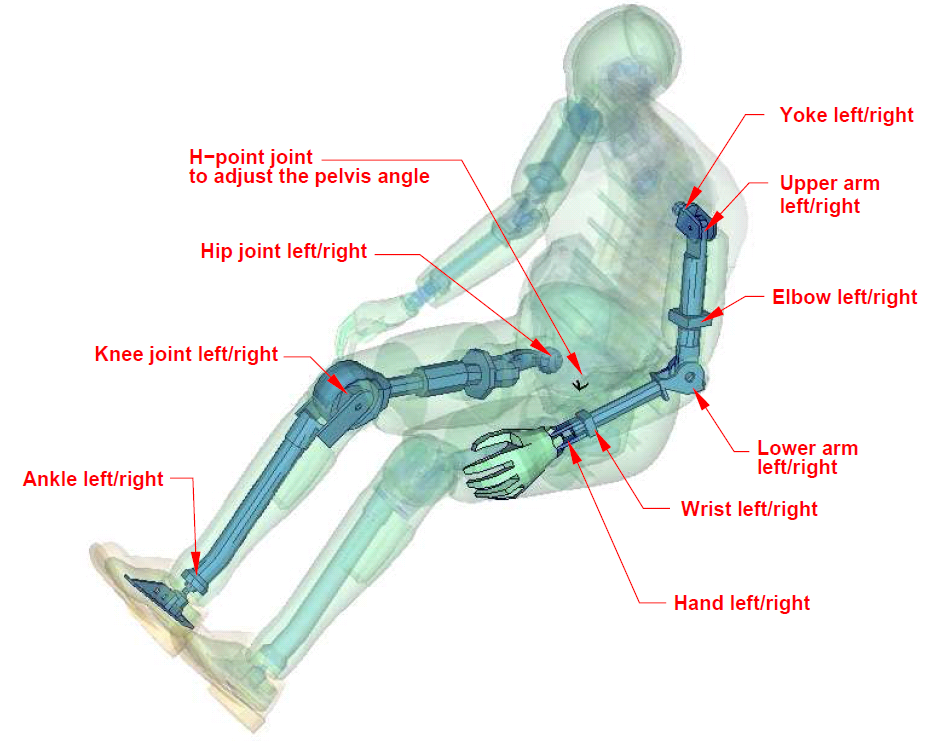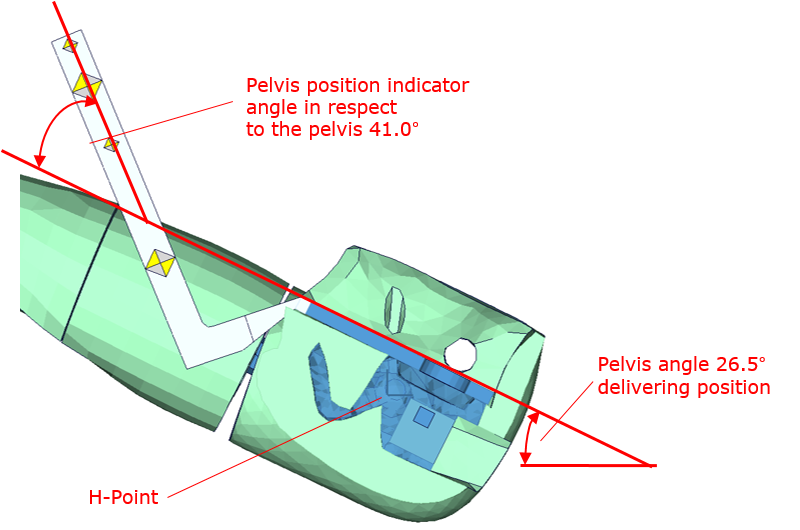Positioning, Tree File
The BioRID2 model is delivered with a tree file for the OASYS Primer pre-processor (may work also for ALTAIR Hypermesh, not verified by DYNAmore). This allows the user to position the dummy and adjust the parts according to their degrees of freedom.

Joints in the BioRID2 model
The BioRID 2 model is delivered with a tree file for the Primer pre-processor (may work also for Hypermesh and ANSA, not verified by DYNAmore). This allows the user to position the dummy and adjust the parts according to their degree of freedom.
The figure above shows the connections of movable parts via tree file. All revolute joints are visualized by beams.
In the H-Point of the dummy model two coordinate systems are modeled. These coordinate systems are connected to each other by a spherical joint. One coordinate system is connected to global directions, e.g. only translations are possible, and rotations are disabled. The other one is connected to the dummy, so it is possible to measure quickly and easily the pelvis angle of the BioRID during the positioning simulation. These coordinate systems are also used to determine the initial pelvis angle with Primer.
Movable parts and revolute joints are:
- Hand,left and right (stop angle: ± 50.0 degrees)
- Wrist,left and right (stop angle: ± 90.0 degrees)
- Lower arm, left and right (stop angle: -90.0 and 1.0 degrees)
- Elbow, left and right (stop angle: ± 90.0 degrees)
- Upper arm, left and right (stop angle: -1.0 and 60.0 degrees)
- Yoke, left and right (stop angle: -20.0 and 90.0 degrees)
- Foot, left and right about their ankle joints (stop angle: local x and z direction ± 5.0 degrees, local y direction -20.0 and 45.0 degrees)
- Lower leg, left and right about their knee joints (stop angle: -0.1 and 90.0 degrees)
- Upper leg, left and right about their hip joints (stop angle: -10.0 and 20.0 degrees)
If the upper legs are rotated at the hip joints about the given stop angles, initial penetrations will occur. This can be observed in the hardware also.

Location of H-point and initial pelvis angle
The figure shows the location of H-Point and the pelvis position indicator. More details are given in the ”User’s Guide BioRID II; 2002, Denton ATD, Inc.”.
The following delivering position is used:
| H-Point Node ID | x-coordinate | y-coordinate | z-coordinate |
| 10500 |
0.0 | 0.0 | 0.0 |
| Pelvis angle | |||
| 26.5 degrees |
